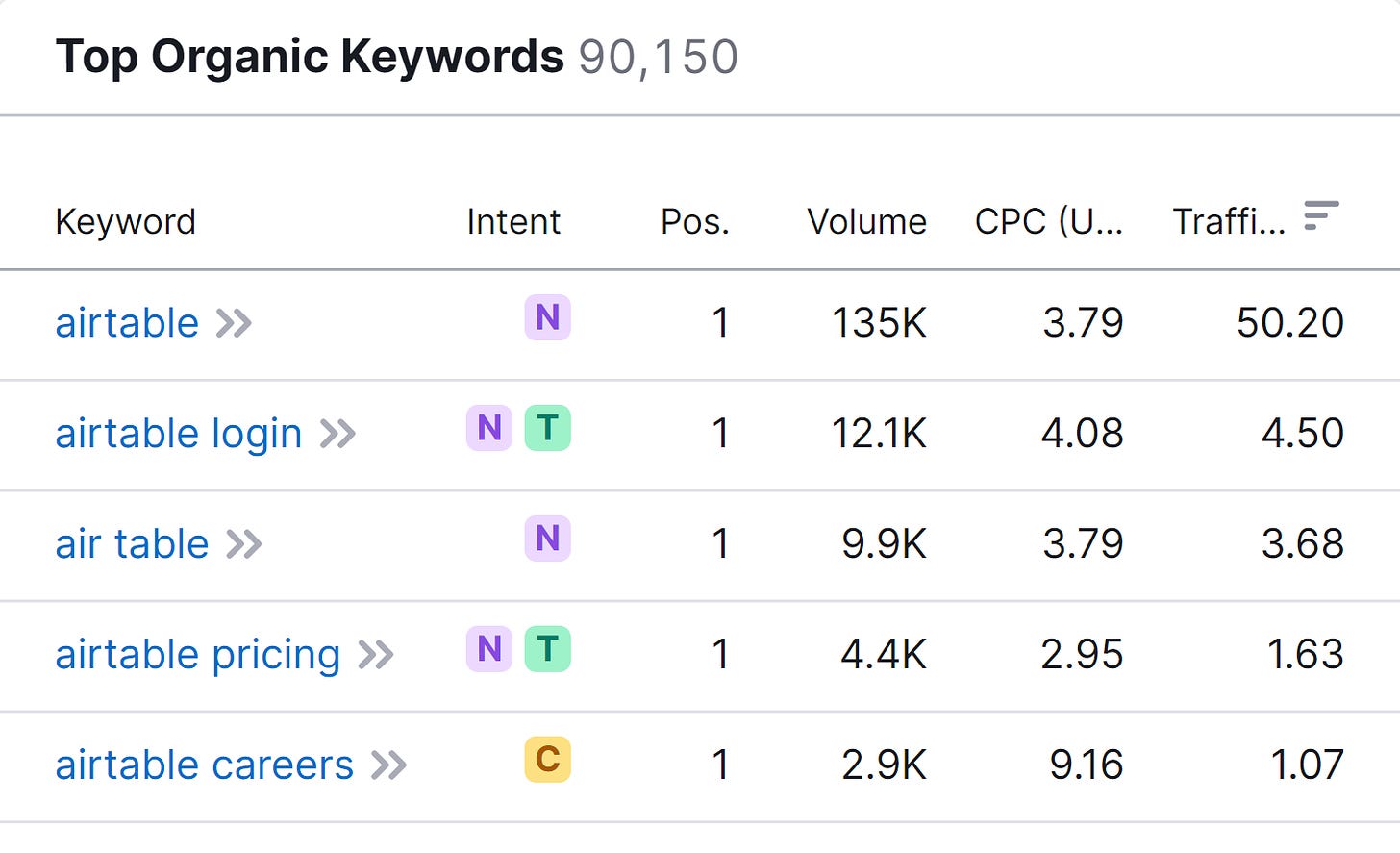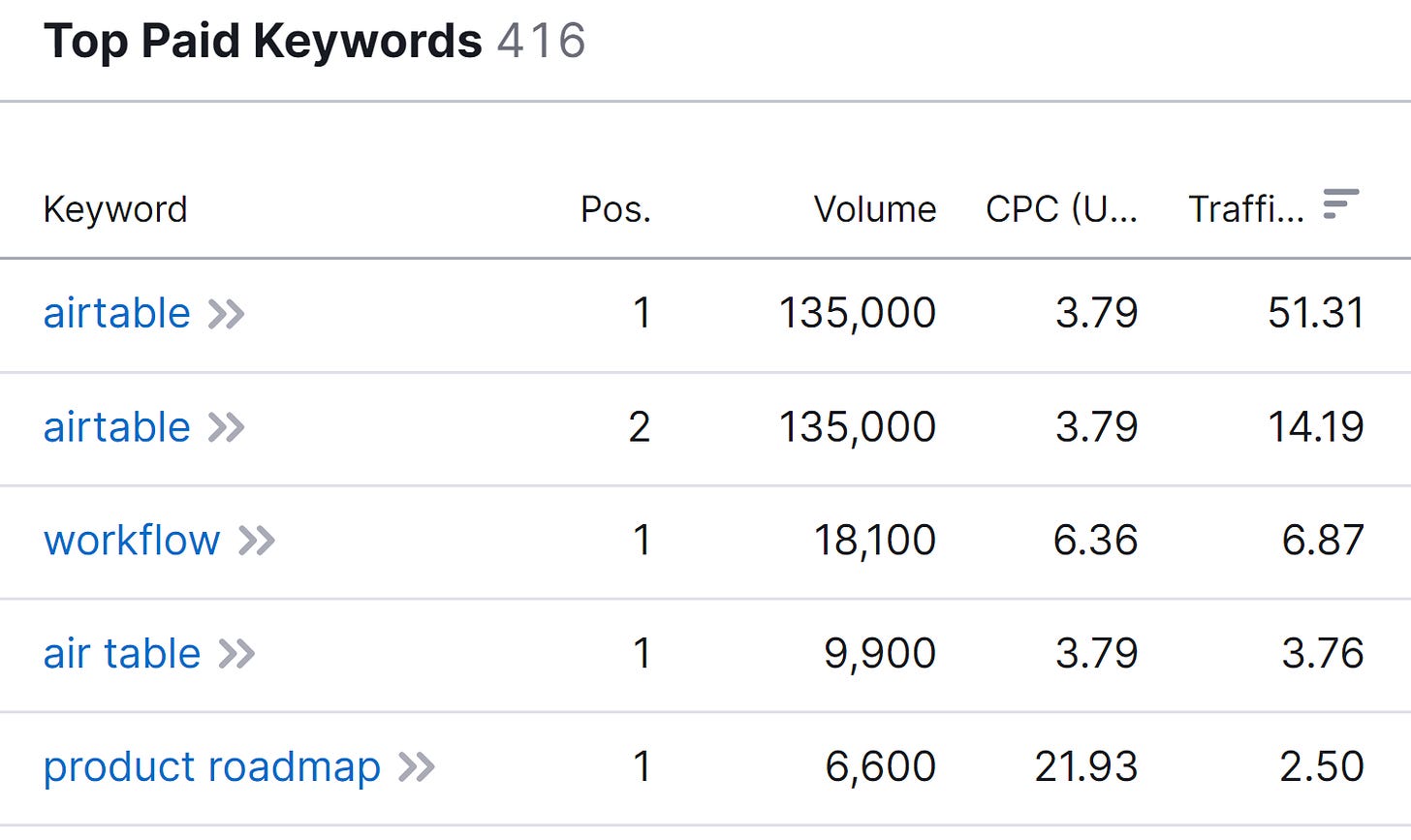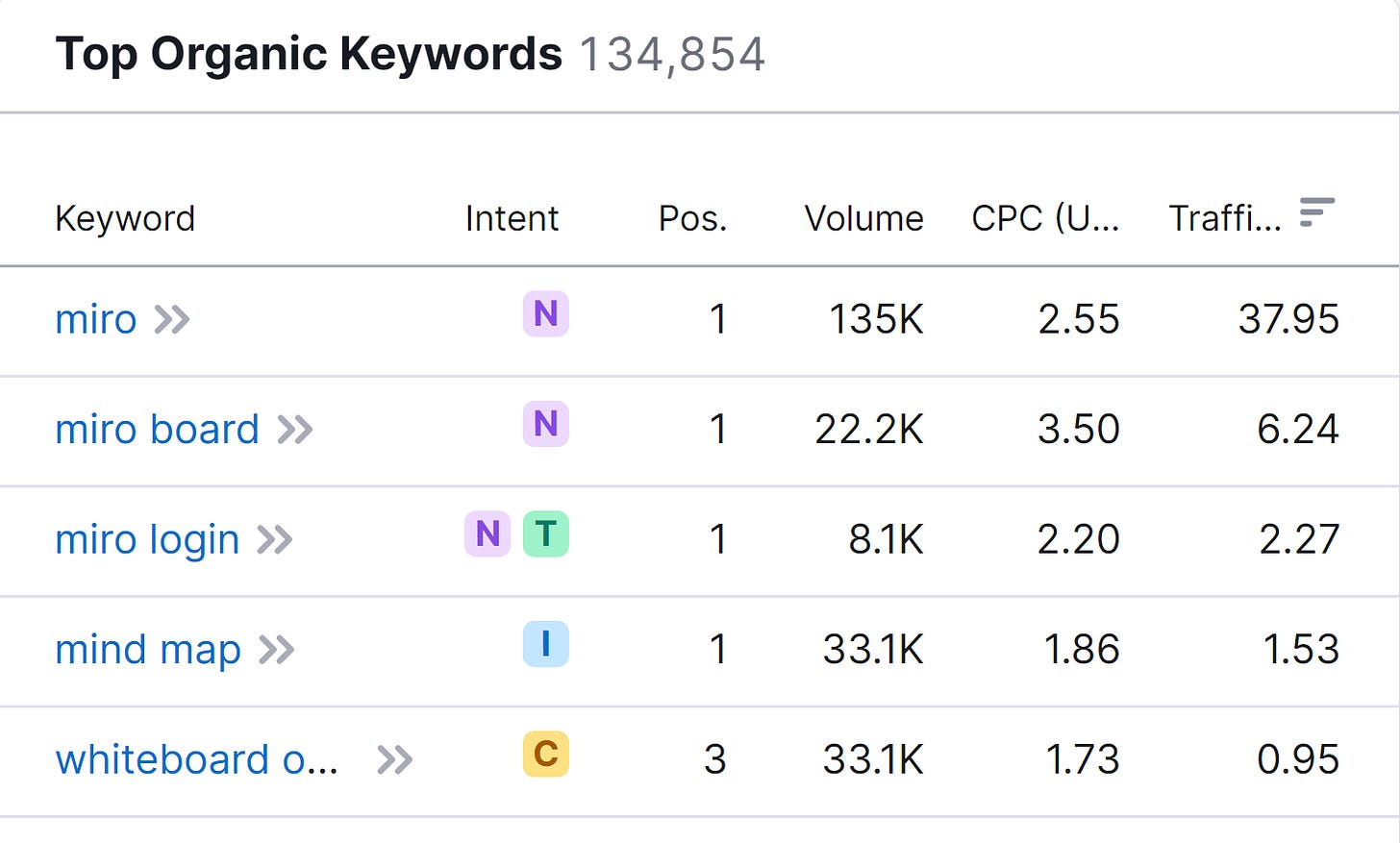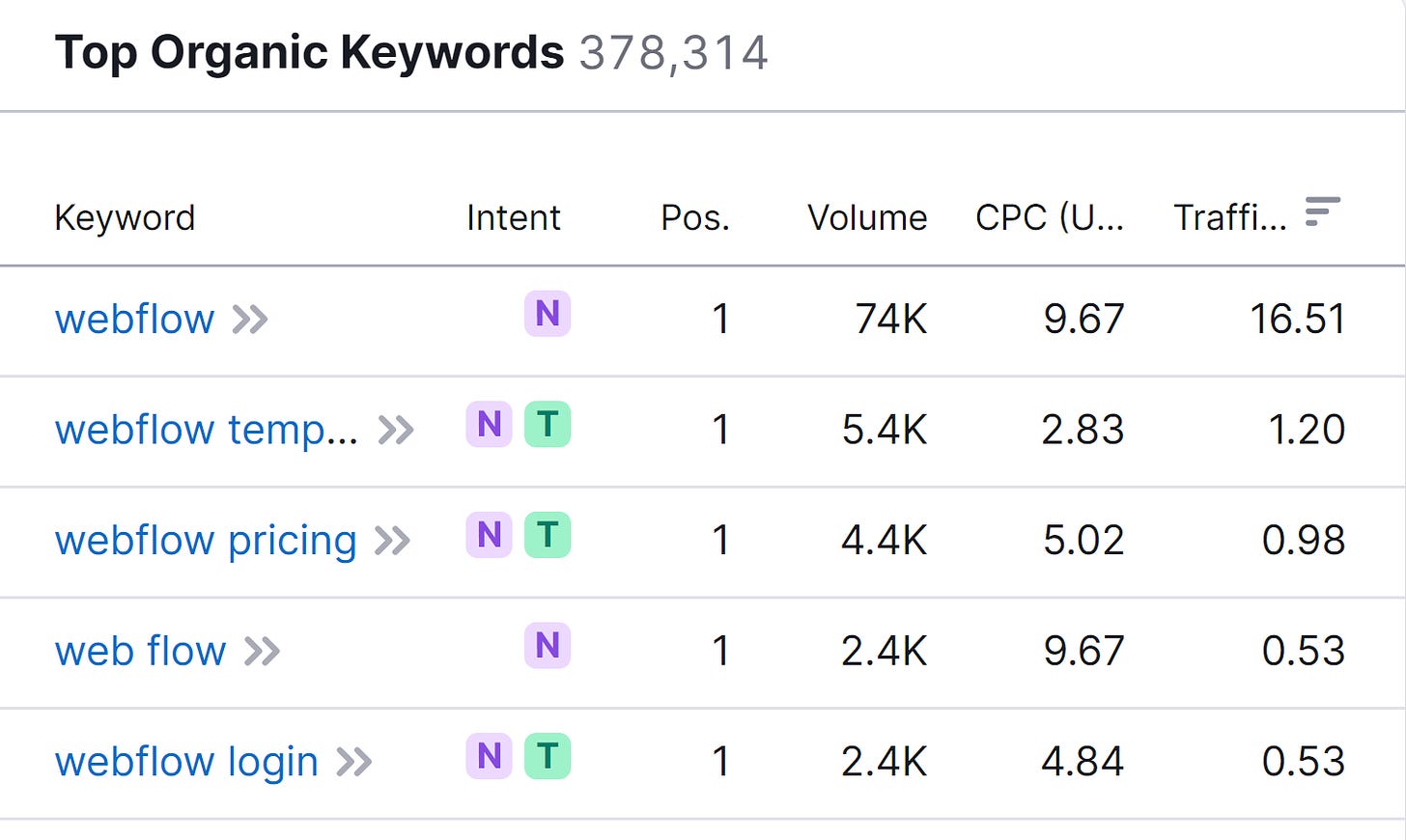A few weeks ago this guest post on product-led marketing came out via Lenny’s newsletter. Within a couple of sentences I started getting really annoyed at the lessons being dished out - they completely gloss over the years of work that went into building the example brands that only now allow them to reap the benefits they’re saying you too should expect, but without making any long term investments to get there.
TL;DR of the article for those who haven’t read it, it boils down to saying product led companies* should start their marketing with organic search and SEO, and product virality.
*companies where majority of the growth comes via the product, which could be in many forms but includes things like self-sign up, product qualified leads which qualify a lead for upsell based on their product usage, and a general belief that revenue is the result of engaged users rather than charging first and seeing engagement second
They then make a bunch of recommendations about growth and completely gloss over two things:
How much of that organic search is actually for the brand name?
The advice comes in the form of “do this” but fails to prompt any customer/user/market research.
Part one - organic search for large brands just isn’t the same for anyone who isn’t a unicorn
The example brands used in the article are Airtable, Miro, Snyk, Webflow, and Zapier. I’m going to pick on Airtable for this because they were lucky enough to come first.
I actually did go 48 pages deep into their blog to see what content they were writing - and it does follow the steps outlined in the article (a lot of templates and how tos) - but it also has a huge emphasis on highlighting customers and the methods they created for their own personal use cases. So really, rather than having an organic SEO strategy… they had a content strategy that emphasised social proof and product value/use cases.
Hindsight is 20/20 so let’s not pretend they knew what they were doing in 2018 with 2023 strategy tinted glasses on.
Furthermore, let’s actually look at their organic search!!
SHOCKING! Who would have guessed people are searching for unicorns by using… their brand name [insert shocked_pikachu.jpg]
Ok what about their paid keywords? Maybe there’s something there…
Just for fun, let’s check the rest of the list of example companies.
Here’s Miro:
Snyk:
Not really sure what’s going on with Snyk, but I guess that’s the nature of their industry.
Webflow:
And finally, Zapier:
Funnily enough, it seems like Zapier is actually using organic search, how-tos, etc in the way that the article claims they are.
The real lesson here is that this companies aren’t just product led growth companies, they’re huge brands and they spent years building up their brand authority, becoming household names within their industries, and for the most part, solving actual problems.
Story time
A personal annecdote from back when I worked at Perkbox circa 2019: Perkbox is now global but back in my day there was a clear distinction between the UK market and Australian market, and the differences between our marketing was always super interesting to me. Around the time I left, the UK marketing team was shifting from a pretty heavy paid ads strategy to spending about 90% of their marketing budget (which was heavily reduced from the paid ads glory days) on Google search and SEO investments.
Meanwhile in Aus, we saw pretty much 0 return from Google, paid or organic. You know what the big difference was? In the UK, Perkbox was a well known, household brand. And in Australia, it had only been in the market for 12 months and we had no brand recognition.
So even within well known companies, starting in a new market does not mean copy pasting your marketing strategy from where you are successful!
This is me just totally throwing out a number but if you’re doing less than $10M ARR, I would not be staking my life on organic search and SEO bringing in the customers.
Part two - a solution searching for a problem
Ok let’s say my part one is completely and utterly wrong, and we go ahead and invest hundreds of hours creating libraries of templates, and blogs and content optimised for SEO. (Side note: I want to acknowledge product led companies would probably use chat GPT. Let’s ignore this for now.)
How do we even know anything you’ve made is useful? PLG (product led growth) would say you know it’s useful because users are getting value out of it. Ok, how are those users finding you? Through organic search? The numbers make that incredibly against your favour if you’re not a Miro.
Aspirational articles like this one that look at well established unicorns and say “do what they’re doing” really miss the part where the strategy they’re using today is not the strategy that got them to yesterday.
Grabbing some examples from them for execution can be really helpful in reminding yourself about best practice. But trying to emulate the strategy of a unicorn isn’t going to help you, it’ll just waste your money. I’d way rather dig up their older marketing, try and find what they were doing at Seed, at Series A, at Series B, etc and map out their marketing journey.
It is far more helpful to look at companies that are just a step or two ahead of where you are in terms of figuring out “what next”. Unfortunately this isn’t as sexy as a case study of what the current tech darlings are doing today.
Something actionable
I always say I want people to be able to do at least one thing after reading every Mehdeeka issue, so if you’re currently wondering what it is you need to do next and you want to find inspiration or examples somewhere, google your industry and “series X announcement” where the X is closest to where you are now.
Or better yet, just go ask your customer facing teams what they’re seeing happening in the market. Run a health check with Customer Success or Sales and ask what their biggest problems are right now, where leads are getting stuck in the funnel, and what topics keep coming up again and again, and then ask “how could marketing help solve these problems”.
From an old Mehdeeka, here’s how I ran sales-marketing catch ups to get this kind of feedback from them:
a) “I like” - positive feedback, things they want to remain the same
b) “I’d like XYZ to improve” - negative feedback, things that need to improve
c) “I’d like” - requests for anything they want, also brainstorming
d) Go back to “I like” and as a group rate each point raised from 1-10 to measure urgency and importance. This filters out anomalies and unimportant pieces of feedback
e) Action points, which then get re-discussed and updates given at the beginning of the next session
Finally, let’s not discount the effect that a strong PR strategy has for building brand awareness and a “household name”.
Final words
If you put in the work, you will see the results! A unicorn’s marketing strategy is not a get rich quick scheme to copy. It’s a ponzi scheme of survivorship bias.
If you are truly questioning your marketing ability and need a pep talk or a sound board, in all seriousness I do reply to any and all responses I get to the newsletter, so don’t be scared.
Just two links this week! I recently spoke to one of the founders of HowdyGo.com - a local Australian competitor to Navattic and Storylane. I’ve recommended Navattic in the past for interactive demos and am happy to have a local team to recommend now!
And just in time for today’s issue, Lana Weal posted about the Gaddie Pitch on LinkedIn. If you want to refine or refresh your elevator pitch, here’s a template for it!










